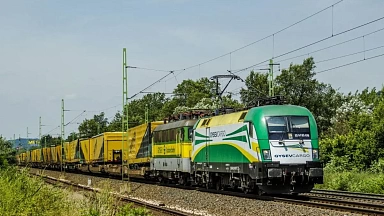The aim of the scheme is to help rail operators of single and group wagon transport to subsidise high operating costs. In facilitating the shift from road to rail, it aims to promote «a greener means of transport».
In single wagon load transport, individual wagons or groups of wagons from different consignors are bundled together to form one train, whereas group wagon transport keeps the same composition from the origin to the destination.
«Both types of transport struggle to reach economic viability,» said the EC.
«Single wagon load transport entails high costs due to its complex and multi-step nature resulting from the switching and shunting of wagons, and wagon group transport operated by short block trains does not benefit from economies of scale due to the lower number of wagons and the short distances they serve,» it explained.
Yesterday the EC therefore announced it had approved Germany’s request for state aid, citing that it is beneficial to the environment, and will not have negative effects on competition and trade in the EU as it is «limited to reducing the competitive disadvantages faced by rail freight transport compared to road transport».
Financial aid to support rail operators will be direct grants at a maximum of €320m per year. This will amount to €1.7bn over the five-year duration of the scheme.
Meanwhile, intermodal rail transport from US West Coast ports has also been gaining traction this year, according to rail operators BNSF and Union Pacific.
Trains.com reported that the ‘Quantum intermodal service’, run by BNSF and trucking company JB Hunt, has been gaining volume as a result of cargo owners choosing to send more marine containers all the way to inland points rather than transload freight into domestic containers.
The service was launched in November and specifically aimed at loads that have never touched rails before.
JB Hunt’s intermodal president, Darren Field, said in an investor conference: «This is true highway conversion. It’s not intended to be a different service level for existing intermodal.
«We are attacking the highway opportunities out there and have good reception and good success and really believe that over the long term we can grow the intermodal business using our Quantum product.»
And a rise in transloading has made the operators «optimistic» about intermodal prospects in the US, according to Trains.com, who cited this as the reason BNSF proposed its $1.5 billion Barstow International Gateway project.
The 4,500-acre complex will include a block-swap yard, support yard, warehouses and transload centres where goods in international containers can be transferred to domestic boxes for the eastbound trip to inland markets via rail. The permitting process is expected to open late-2027.
If accepted, this is set to ease congestion at the ports of Los Angeles and Long Beach and eliminate the 80-mile drayage for freight currently trucked from the ports for transloading before being trucked to one of BNSF’s Southern California intermodal terminals.



